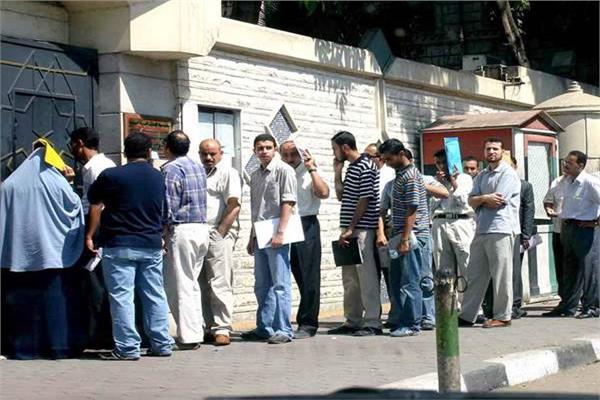
Cairo
Source: Elaosboa newspaper
By – Dr. Ali Mohamed El Khouri
The global market is witnessing a complex crisis, including economic stagnation, price inflation, and disruptions in supply chains as a result of the “Covid 19” pandemic, the Russian-Ukrainian war and a series of economic and political ideological conflicts between global and regional powers. The course of what is happening on the global stage has cast a shadow on the labor market and caused high unemployment rates among young people and workers, as millions lost their jobs, and millions of companies around the world closed their doors or went bankrupt due to their inability to continue and compete in light of the difficult and harsh conditions the world is currently witnessing.
Estimates show that the number of unemployed people globally reached 207 million people in 2022 compared to 186 million in 2019. And that the number of unemployed youth in 2022 will exceed 73 million, six million higher than the pre-pandemic level, and expectations indicate a new wave of increase Numbers for the year 2023.
At the Arab level, Arab countries record the highest and fastest unemployment rate among youth, with expectations of it reaching 24.8% in 2022, and the unemployment rate among women reaching 42.5% in the same year, which is nearly three times the global average of unemployment for women (14.5%). .
The latest report of the International Labor Organization confirms that the recovery in labor markets will remain slow, with fears of the spread of epidemics and the persistence of challenges in global labor markets, which will make unemployment rates higher than pre-Covid 19 levels until at least 2023.
Global reports warn that these high rates of unemployment will weaken the economic, financial and social fabric in countries, at a time when the prospects are still fragile and the road to recovery is slow and fraught with uncertainty.
The world is already witnessing deep political, social and security problems that in turn are causing significant damage and distortions to labor markets. Not only that, but we also find an equally dangerous increase in poverty and inequality.
The obvious fact is that there can be no real stability without a broad labor market recovery. For this stability to lead to a sustainable recovery, the labor market must be rehabilitated and based on decent work principles – including health, safety, equity and social protection – and this approach should be supported through social dialogue for more correct understanding and transparency between the decision maker and the labor market with all stakeholders, and a vision of A balanced system that brings together the employer, the worker, the community and the family in an interconnected system of benefits without prejudice to one party against the other. Of course, all of this adds a greater burden on policy makers to address the imbalances in the labor market and to develop short and long-term national policies to reduce the employment gap.
In practice, what is clear to us is that the damage to the labor market will take many years to repair, with long-term consequences for the workforce, family income, social cohesion and possibly political.
What policy-makers should be aware of is that unemployment has many negative effects on the individual and society, which may be represented in its simplest forms by depression, mental health, high crime rates, and even affecting the productivity and competitiveness of the economies and security of countries.
In order to save the labor market and reduce the current unemployment gap between the youth and the labor force, it is necessary to develop clear national and regional visions and plans that seek to find real solutions – not pendulum ones – in order to open various economic horizons to accommodate the growing numbers of the unemployed and prepare them and develop them for the labor market; So that the millions of unemployed youth will not be a latent, explosive powder that destroys societies, and is a cause of unrest and problems for governments – especially in poor countries – that are unable to absorb the youth and the unemployed with various social protection programs and choose solutions that leave them to the unknown.
We need to double our capabilities to develop businesses and establish companies, institutions and factories that can absorb the increased labor due to the increase in births and employment of the unemployed. Hence, a radical and decisive review of government policies aimed at encouraging foreign and domestic investment must be reviewed.
The same question arises here, are our countries really attractive to investment compared to other countries? Has the state and its infrastructure, legislative and social status been prepared as one of the national economy enablers and to help the investor to exist with a long-term strategic thought?
If the answers to such questions are not frank, clear and courageous – either yes or no – then the social and economic challenges will continue on the path of exacerbation and will put countries in faltering circles that will inevitably throw them into the arms of an ambiguous and disturbing future, and the solutions will then come at a very high cost!
| About | |
|---|---|
| Initiatives | |
| Knowledge | |
| Services | |
| Media Center | |
| Contact |